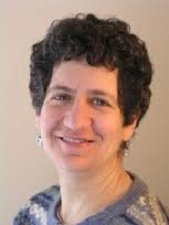On its surface, Chayei Sarah is one of the tamer portions in all of the Torah. It is the only parasha in Genesis in which there is a complete absence of conflict and destruction. Yet there is an extremely rich subtext here, one that can be read in relation to the dramatic and disturbing events of last week’s parasha. Vayera features the conflict between Abraham’s wives, Sarah and Hagar, and the decision to banish both Hagar and her son Ishmael into the wilderness. After having one wife and son taken from him, Abraham then comes close to killing his beloved Isaac. Vayera is testimony to jealousy, bitterness, and conflict, and in it we find the mythic beginnings of the enmity between the children of Israel and the children of Ishmael, the Jewish and the Arab peoples.
Chayei Sarah picks up in the wake of the Akedah, after which a broken silence descends. We never see Abraham and Isaac speak to each other again, and Abraham is never again shown speaking to God. According to midrashic tradition, Sarah dies of heartbreak and fright immediately after she learns of her husband’s actions on Mount Moriah. As for Isaac, although much of Chayei Sarah is focused on finding him a wife, we never hear him say a word.
But beneath the silence and the brokenness, something restorative is brewing. We get a glimpse of it when Isaac and Rebecca meet for the first time—a moment of mystery, humor, and romance:
And Isaac came from Be’er l’chai ro’i, for he lived in the land of the Negev. Isaac went out to meditate in the field at the turn of evening; and he lifted up his eyes, and saw, and here, camels were coming. Raising her eyes, Rebecca saw Isaac, and she fell off her camel! She said to the servant, ‘Who is that man walking in the field toward us?’ And the servant said, ‘That is my master.’ So she took her veil and covered herself…Isaac brought her into the tent of Sarah his mother, and took Rebecca, and she became his wife; and he loved her; and Isaac was comforted after his mother. (Gen. 24:62-67)
An intimate and powerful connection is implied here between Sarah, Isaac’s mother, and Rebecca his wife. Noting the juxtaposition of Rebecca’s birth at the very end of Vayera and Sarah’s death at the very beginning of Chayei Sarah, the midrash notes: “When God causes the sun of one righteous person to set, then the sun of another righteous person arises” (Gen. R. 58:2). Parsing the strange construction of Genesis 24: 67, which can be read “And Isaac brought her into her tent – Sarah his mother,” the midrash draws a direct line from Sarah to Rebecca: As long as Sarah was alive, there was a divine cloud that hung over her tent, her doors were open in generosity, there was a blessing in her dough, and her lamp would burn from one Shabbat to the next. When she died, all of those things ceased, but when Rebecca came, they all returned (Gen. R. 60:16). It is as if Sarah is reborn, as if her soul finds continuity, in the person of Rebecca.
The other connective thread is to be found in the verses associated with Isaac. When he re-appears in Chayei Sarah (according to midrashic tradition, 14 years after the Akedah), the text makes a point to note that he is coming from Be’er l’chai ro’i, and it is here that he settles after his father dies. It is notable that Isaac is not connected with Be’er Sheva, where his father has gone to live, but with the mysterious well that marks the spot where Hagar first encountered God, and which is named after that encounter. Midrashic tradition picks up on this association, and imagines Isaac bringing Hagar—now named Keturah—with him, to reunite with Abraham. In my own imagining, Isaac has spent the last 14 years not with the father who tried to kill him, but with his banished brother and stepmother, forging a deep connection that is revealed when he and Ishmael come together to bury their father at the end of the parasha.
The Torah of conflict, the Torah of battles over scarcity—scarcity of love, of honor, of land, of blessing—is prominent in the Genesis narratives. One such conflict, that between Sarah and Hagar, and thus implicitly between their sons, Isaac and Ishmael, has come to inform our current understandings of the Israeli-Palestinian conflict and tensions between Jews and Muslims. It can sometimes feel like an eternal conflict, one without hope of repair. Yet interwoven into the Torah of conflict is another Torah, a Torah of restoration and reconciliation. The uniting of Isaac and Rebecca can be read as a tikkun between Sarah—now embodied in her daughter-in-law—and Hagar, whom Isaac brings with him. What the two women could not achieve in their own lives is made possible by the next generation.
As we seek peace in the Middle East, may we always remember that even in the most bitter moments of conflict, we have a choice of which Torah to uphold, which Torah to expound: the Torah of despair, or the Torah of hope; the Torah of conflict, or the Torah of repair.
Toba Spitzer is the rabbi of Congregation Dorshei Tzedek in West Newton, MA, and serves as the Treasurer of T’ruah. She is grateful to Rabbi Sheldon Lewis for his insight about the “Torah of reconciliation,” which can be found in his book of the same name (Gefen Publishing House, 2012).

